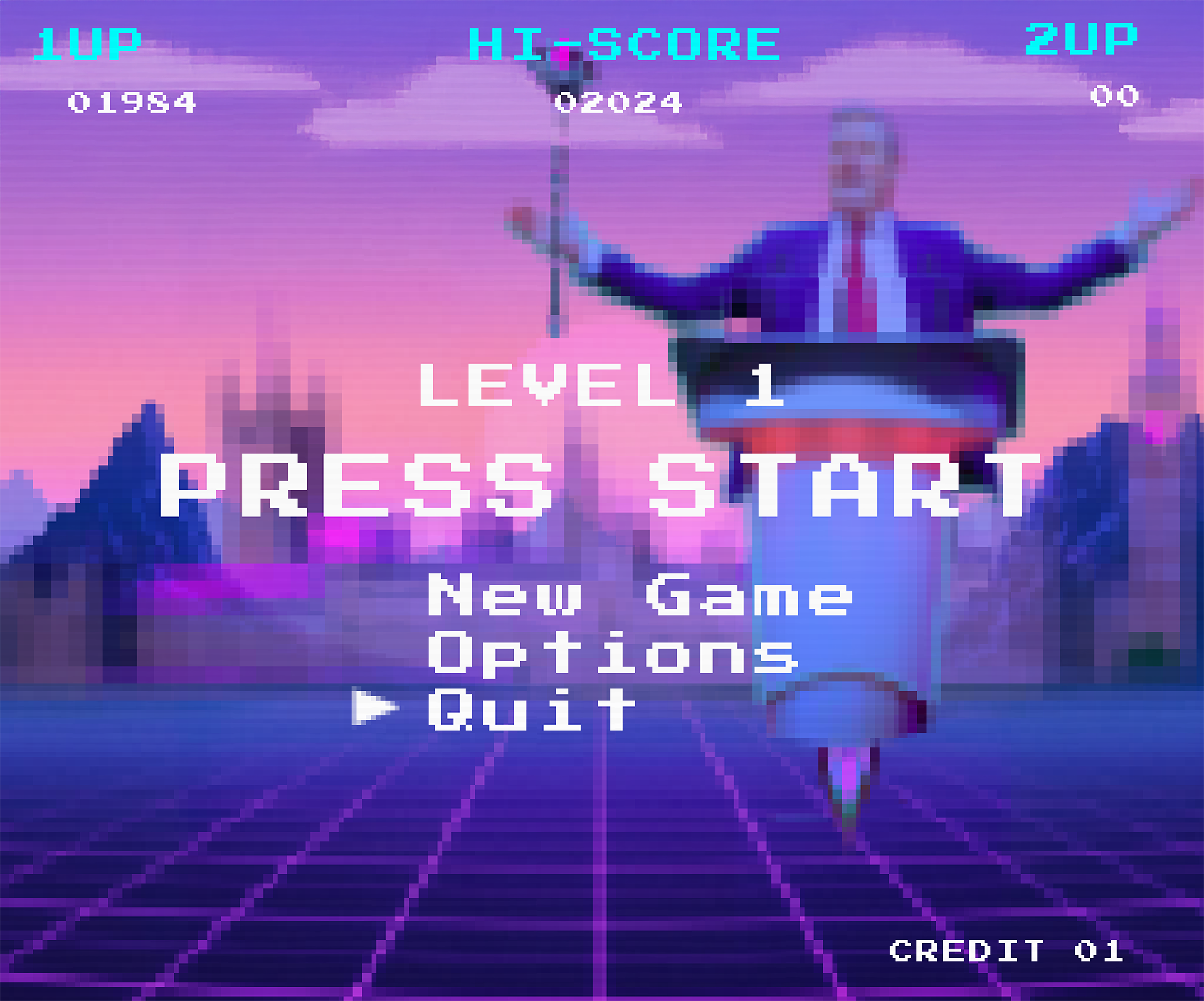In this work I began experimenting with the idea that politics itself can be read as an arcade game. The central provocation is that, much like in a coin operated machine, the player inserts their credit but the outcome feels predetermined – the characters you select rarely seem to change the underlying system. I wanted to explore whether politicians should be read here as the boss characters (the evil to be defeated), or as avatars that the system presents for us to play with.
Level 1 introduces Keir Starmer as the first “sprite.” He hovers above a neon grid on a kind of flying podium, arms outstretched, presented not as a man but as a blocky arcade construct. The background – a pixelated Westminster Palace – dissolves into something less like a seat of government and more like a fantasy castle, closer to the aesthetics of Dungeons & Dragons or early role-playing games. This shift was important: it reduces Westminster to the status of scenery in a game world, a backdrop against which battles are staged but never truly resolved.
The piece takes the form of a title screen. Borrowing directly from 1980s arcade UI, the composition features “1UP,” “HI-SCORE,” “CREDIT 01,” and the familiar command to “PRESS START.” This overlay was crucial, as it re-frames the whole image not just as a parody of a politician but as an artifact from another medium – a found screenshot ripped from a fictional game. In doing so it raises the question: who is playing, and what is being played?
By presenting politics through the lens of game mechanics, the work questions agency and futility. If democracy is reduced to character select and boss fights, what role does the player (voter) actually have? The humour of the arcade parody is balanced against a darker undertone – that politics may in fact be a closed system, designed to absorb credits while producing the illusion of progress.
This piece acts as the series opener, a “Level 1 – Title Screen.” Later works shift into boss battle scenarios, with different politicians occupying the role of opponent sprites, each accompanied by props and environments that exaggerate their political identities. Together, the series aims to parody the spectacle of political theatre while asking whether the real game is ever winnable.
